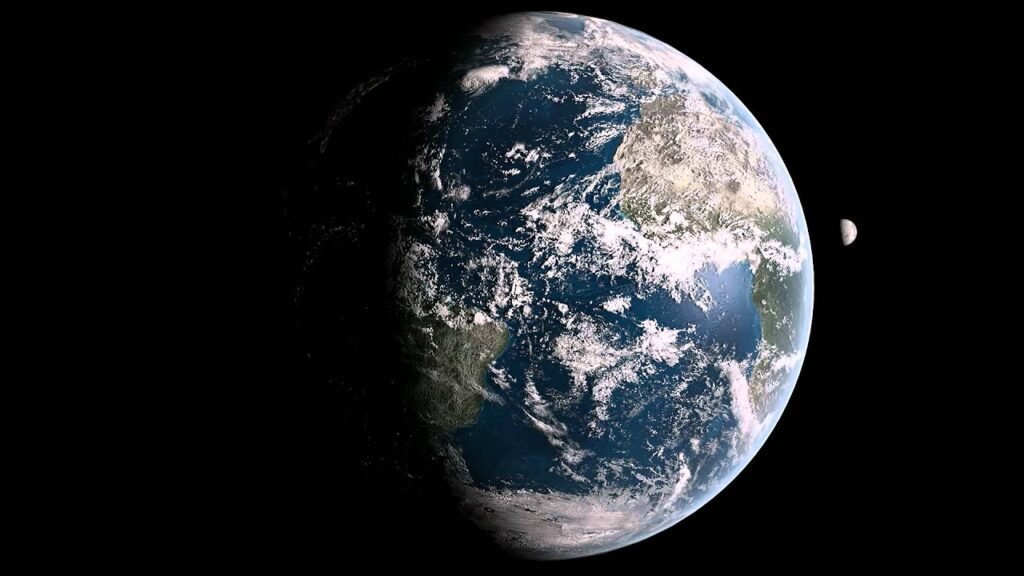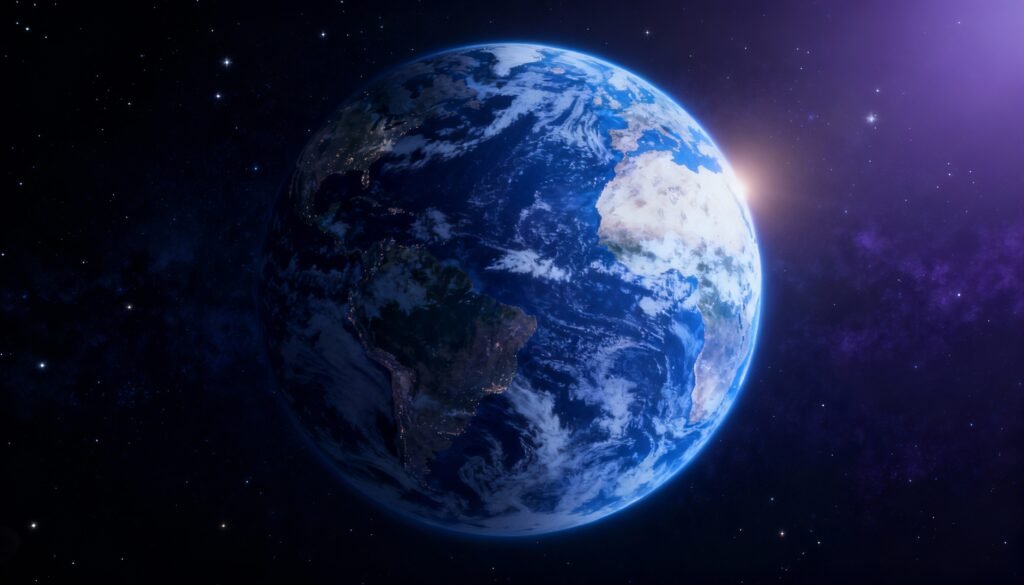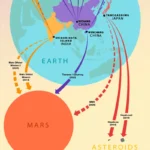From Myths to Mechanics — How People Once Imagined Earth’s Support
For thousands of years, people wondered how the Earth “stays up” in space.
Ancient cultures pictured our world resting on pillars, elephants, or cosmic turtles, believing something had to physically hold it.
But science later revealed a more elegant reality — the Earth floats freely in space, guided not by creatures, but by a cosmic law: gravity.
The Invisible Grip of the Sun — Gravity in Action
At the heart of our Solar System, the Sun’s immense mass pulls everything toward it.
This gravitational force acts like a powerful magnet, attracting the Earth and all planets inward.
Yet Earth doesn’t crash into the Sun — because it’s also moving sideways at an incredible 30 km per second.
The result? A perfect cosmic balance between pull and motion.
Earth is constantly “falling,” but its sideways speed keeps it in orbit, forming an endless curve around the Sun.
Think of it like tossing a ball — if you throw it fast enough, it never lands; it just keeps circling.
The Delicate Dance — Gravity vs. Motion
Earth’s orbit is a continuous balancing act.
- Gravity pulls it inward
- Velocity pushes it forward
If Earth slowed down — it would spiral into the Sun.
If it sped up — it would fly away into deep space.
This balance creates a stable path — the elliptical orbit — ensuring days, nights, and seasons occur predictably for billions of years.

The Rhythm of Time — Days, Nights, and Years
As Earth orbits the Sun, it also spins on its axis once every 24 hours, giving us day and night.
- Side facing the Sun → Daytime
- Side facing away → Nighttime
And while spinning, Earth completes one full revolution every 365.25 days, defining our year.
Add in Earth’s tilt (23.5°), and you get the changing seasons — winter, spring, summer, and autumn.

Einstein’s Vision — Gravity Isn’t a Force, It’s Curved Space
In 1915, Albert Einstein redefined our understanding of gravity.
His General Theory of Relativity revealed that mass bends the fabric of spacetime.
The Sun doesn’t “pull” Earth; it warps space around itself.
Earth simply moves along this curved space — following the straightest path possible in a distorted universe.
Imagine placing a heavy ball on a stretched rubber sheet — the sheet curves.
Earth is like a marble rolling along that curve, never escaping, never falling in.
The Harmony of the Solar System
Every planet follows the same law — each orbiting at just the right speed to stay balanced.
This gravitational harmony keeps the Solar System stable.
Even the Moon, orbiting Earth, follows this same principle — gravity’s gentle hand guides every motion, from falling apples to spinning galaxies.
Fun Fact
Earth’s orbital speed: 107,000 km/h
Sun’s mass: 333,000 times Earth’s
Distance from Sun: ~150 million km (1 AU) Time for one orbit: 365.25 days
The Beauty of Balance
We are not held by invisible strings or pillars — we are held by motion itself.
Gravity and movement create a cosmic partnership — an eternal dance that sustains life and time.
“The Earth doesn’t need support — it is held in place by the poetry of physics.”











